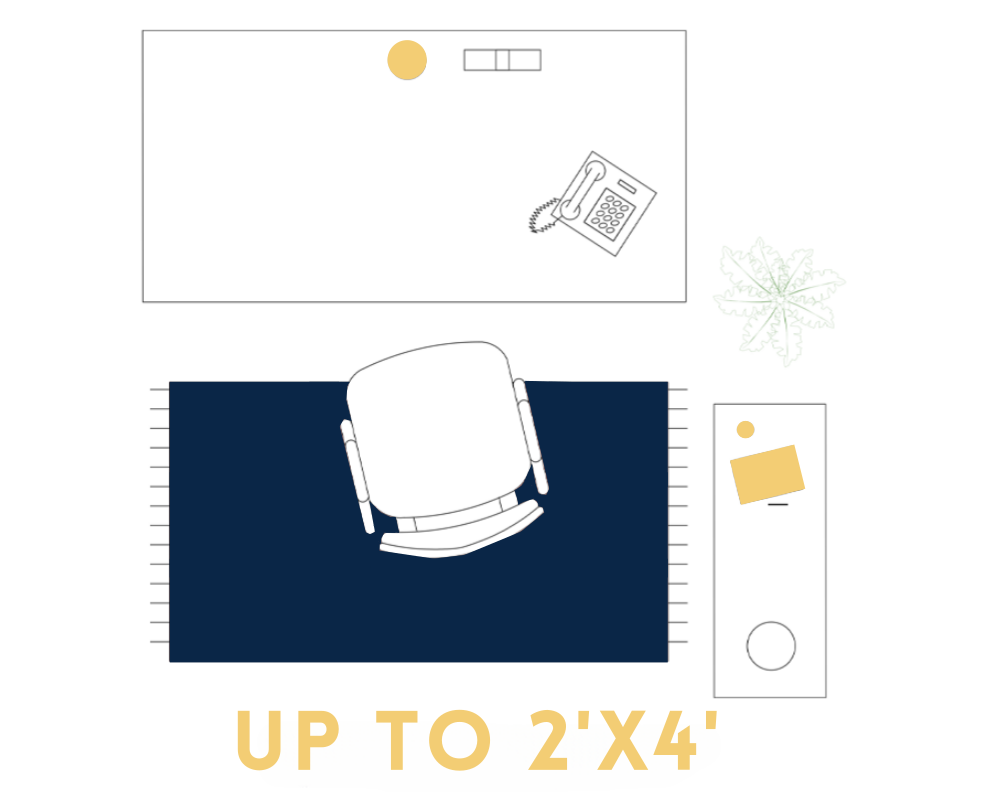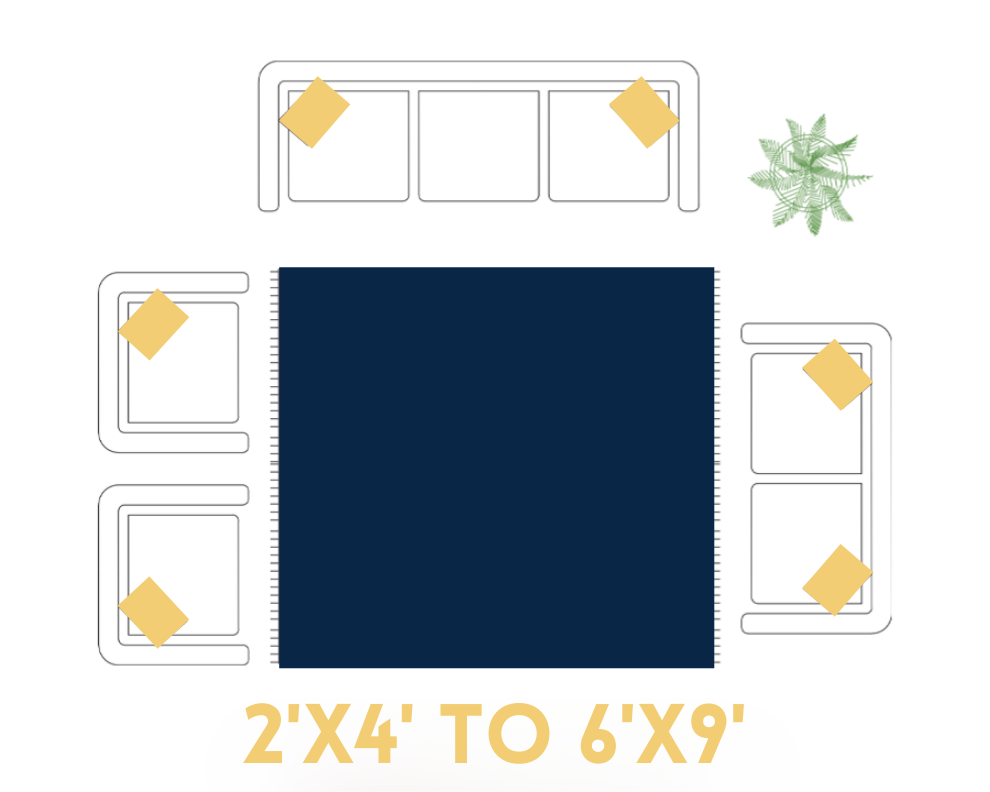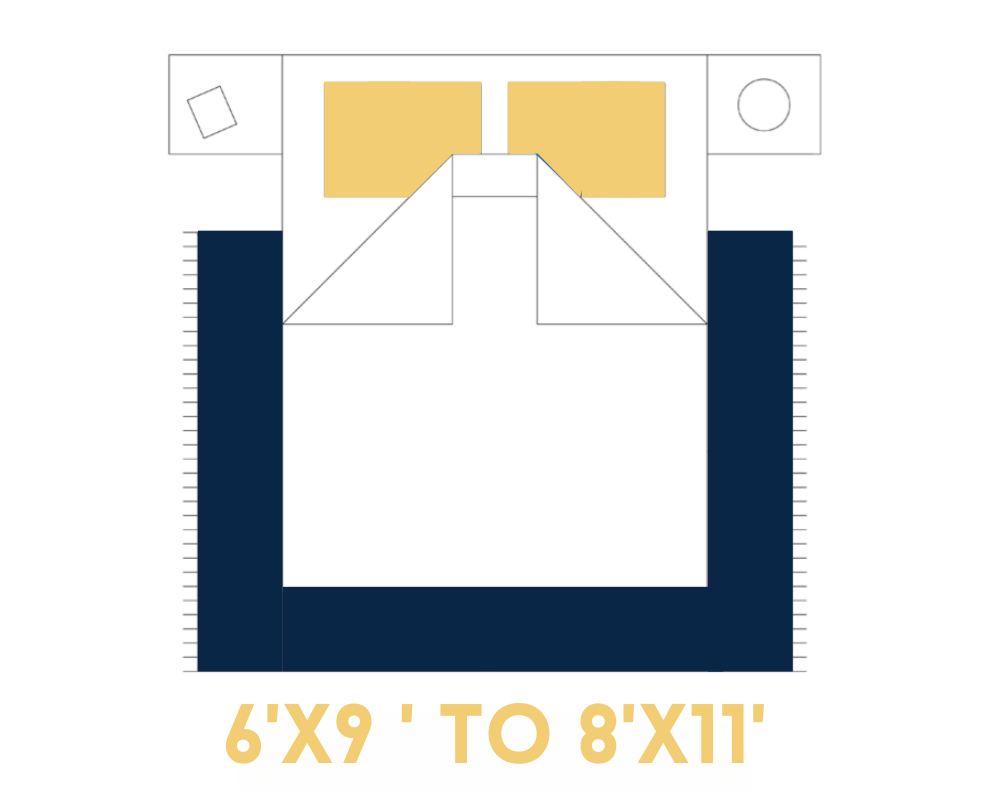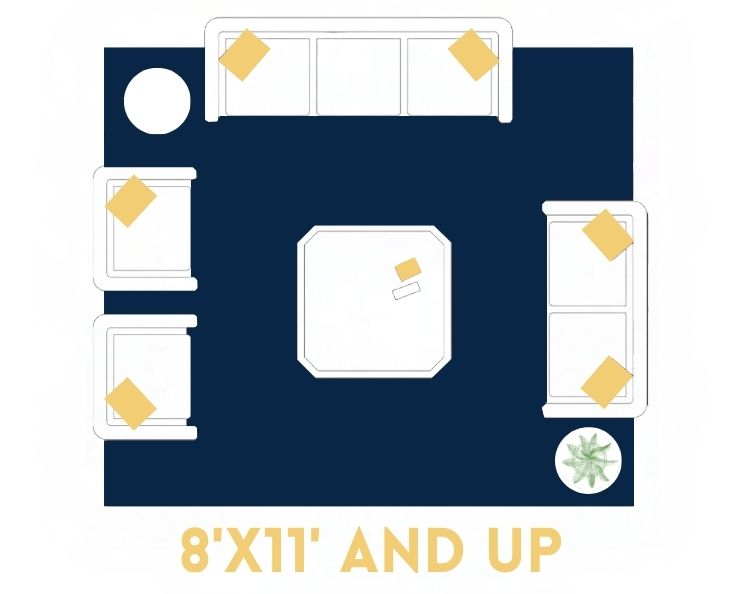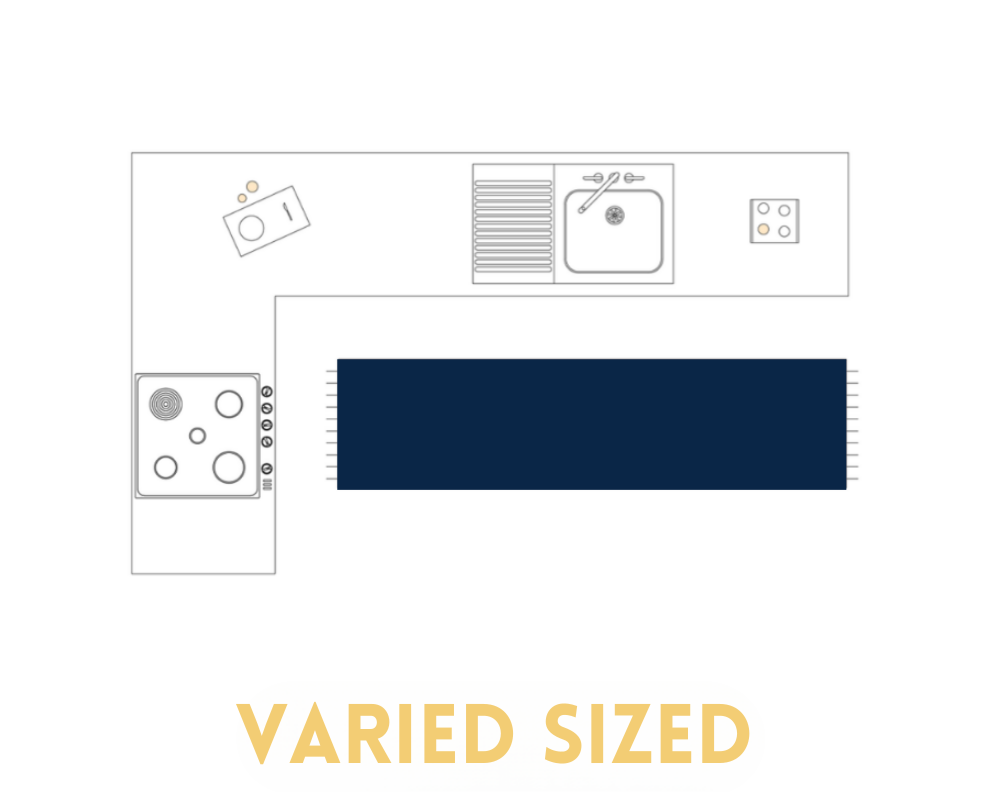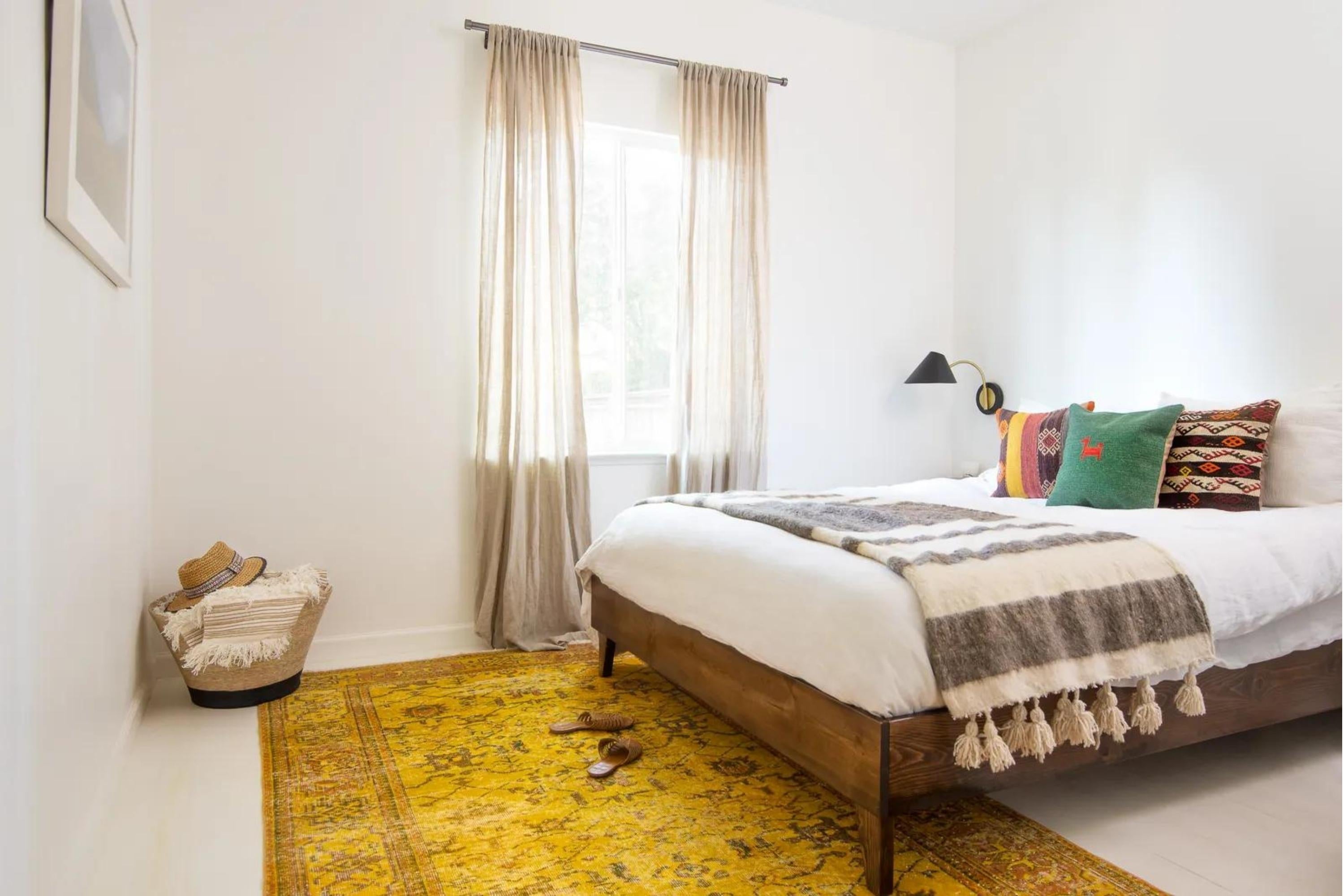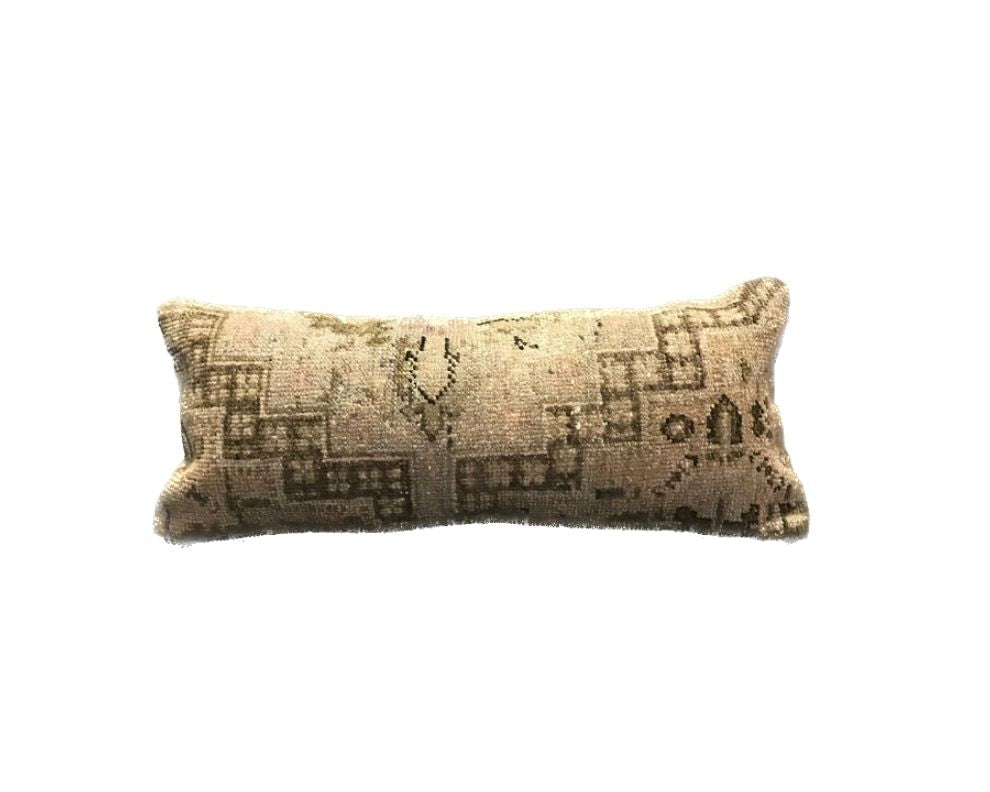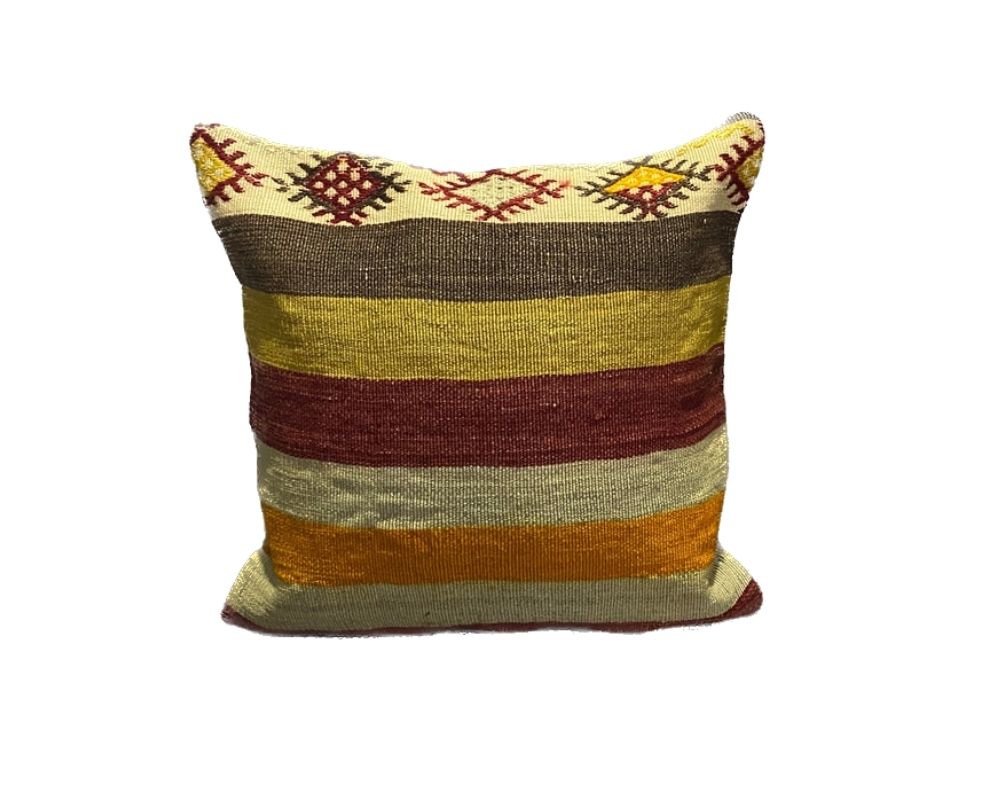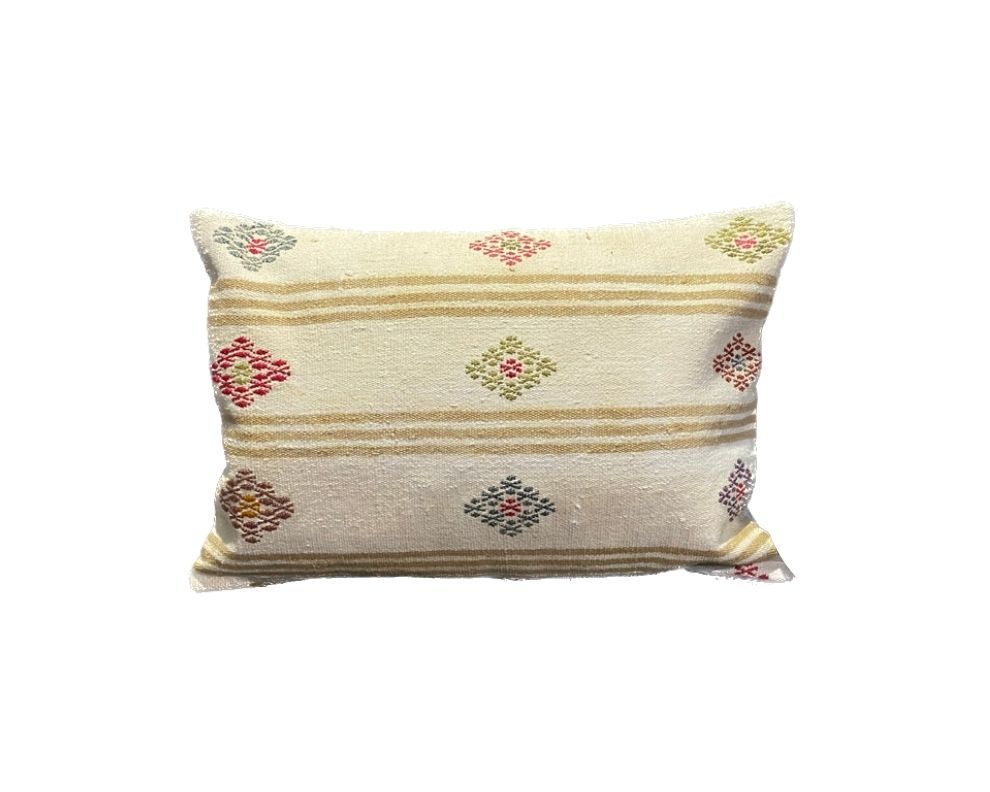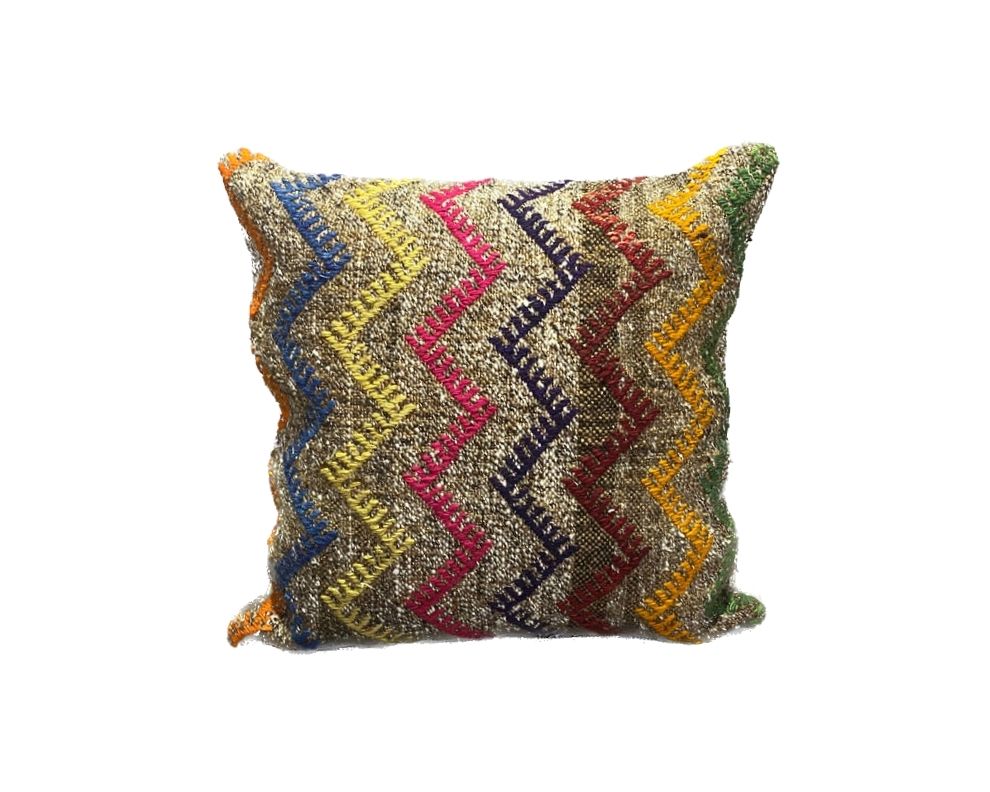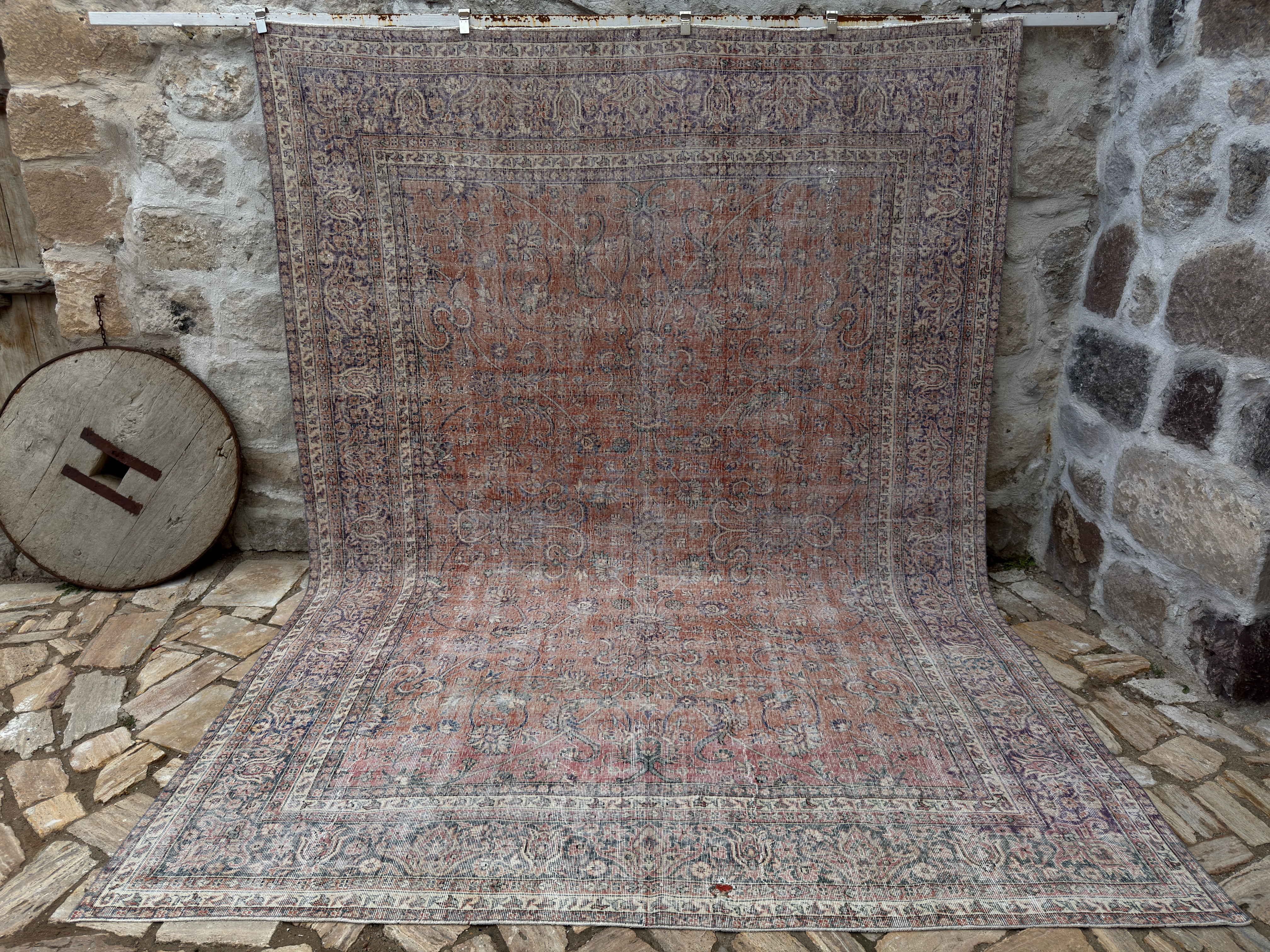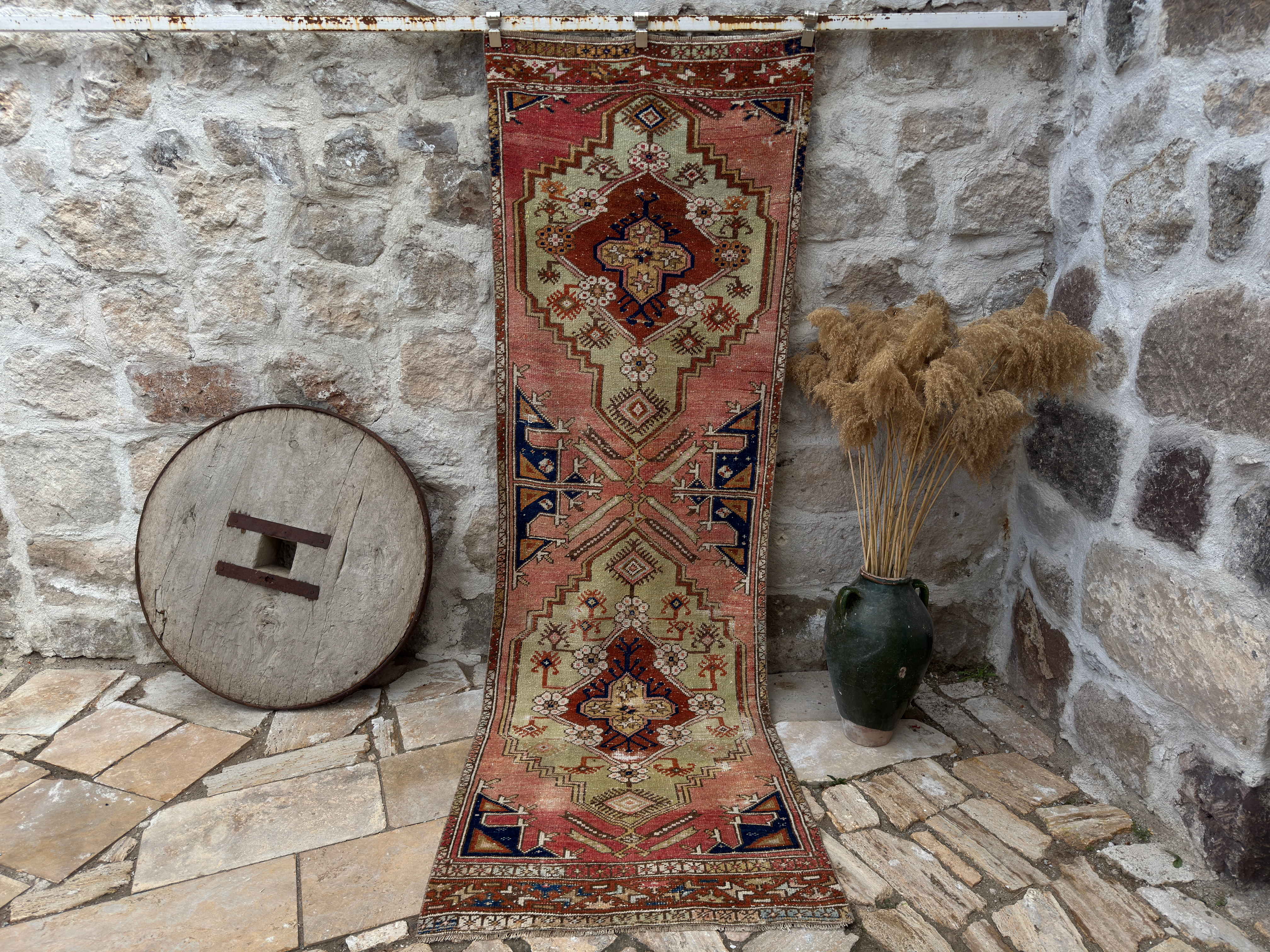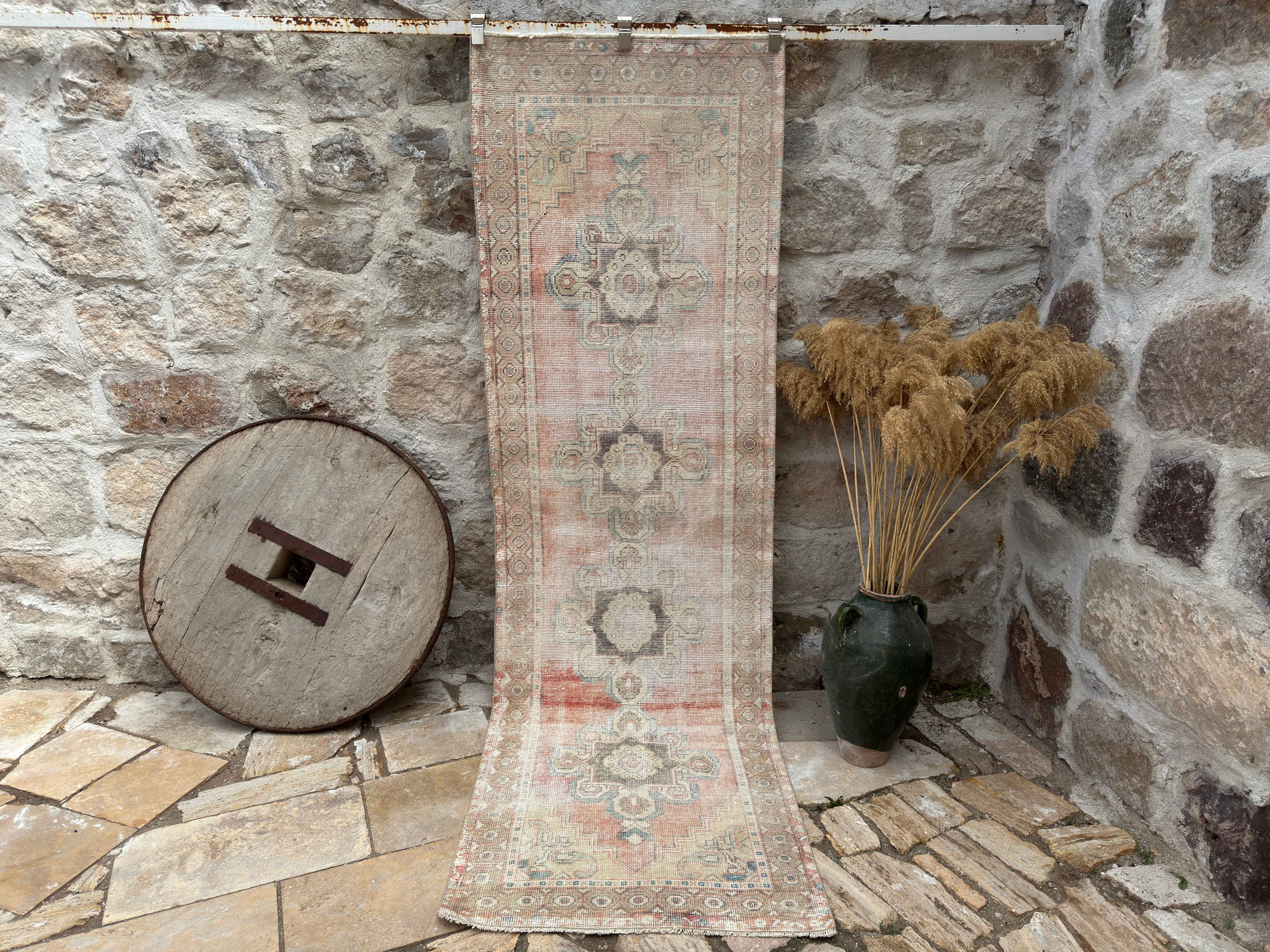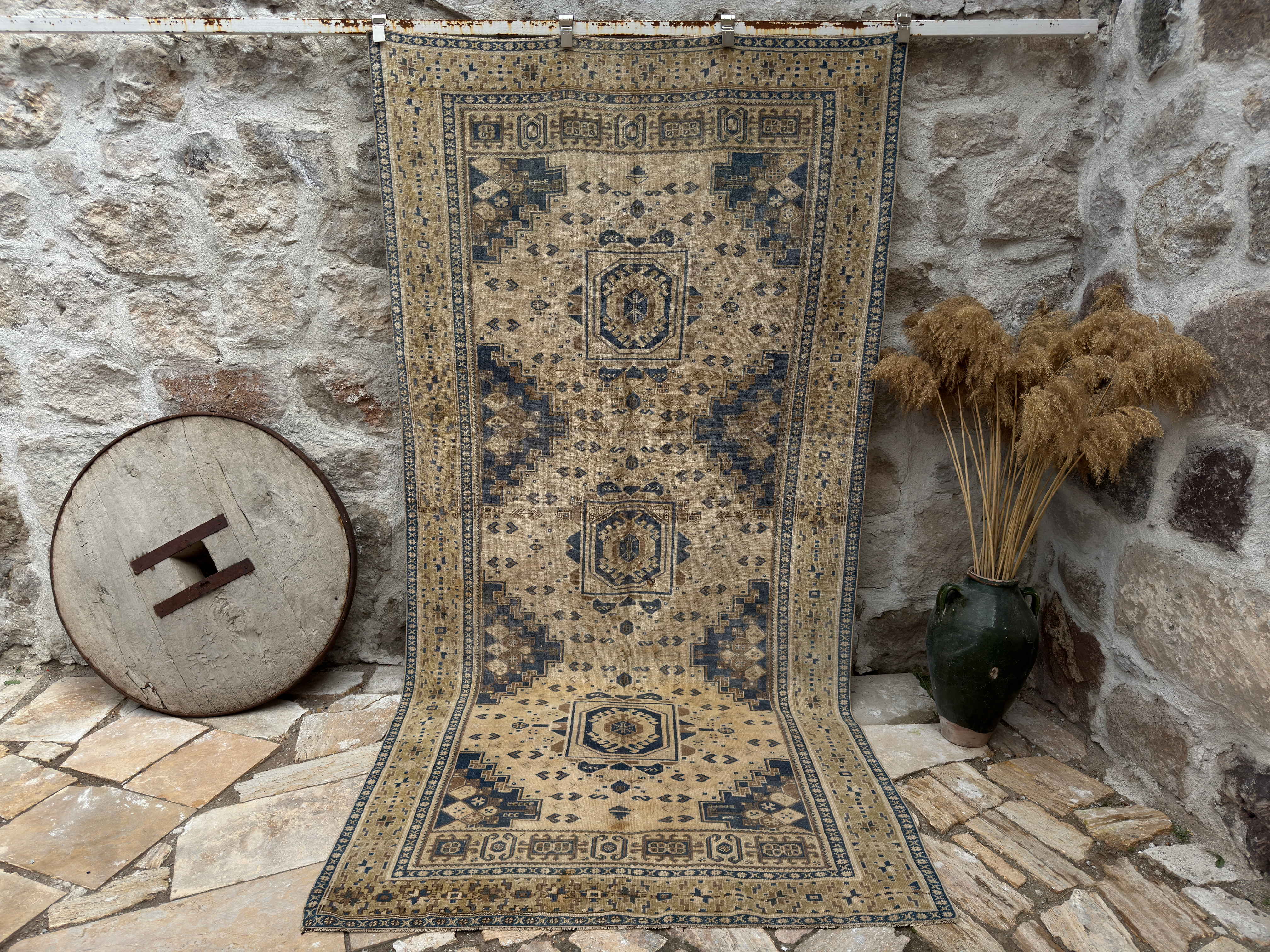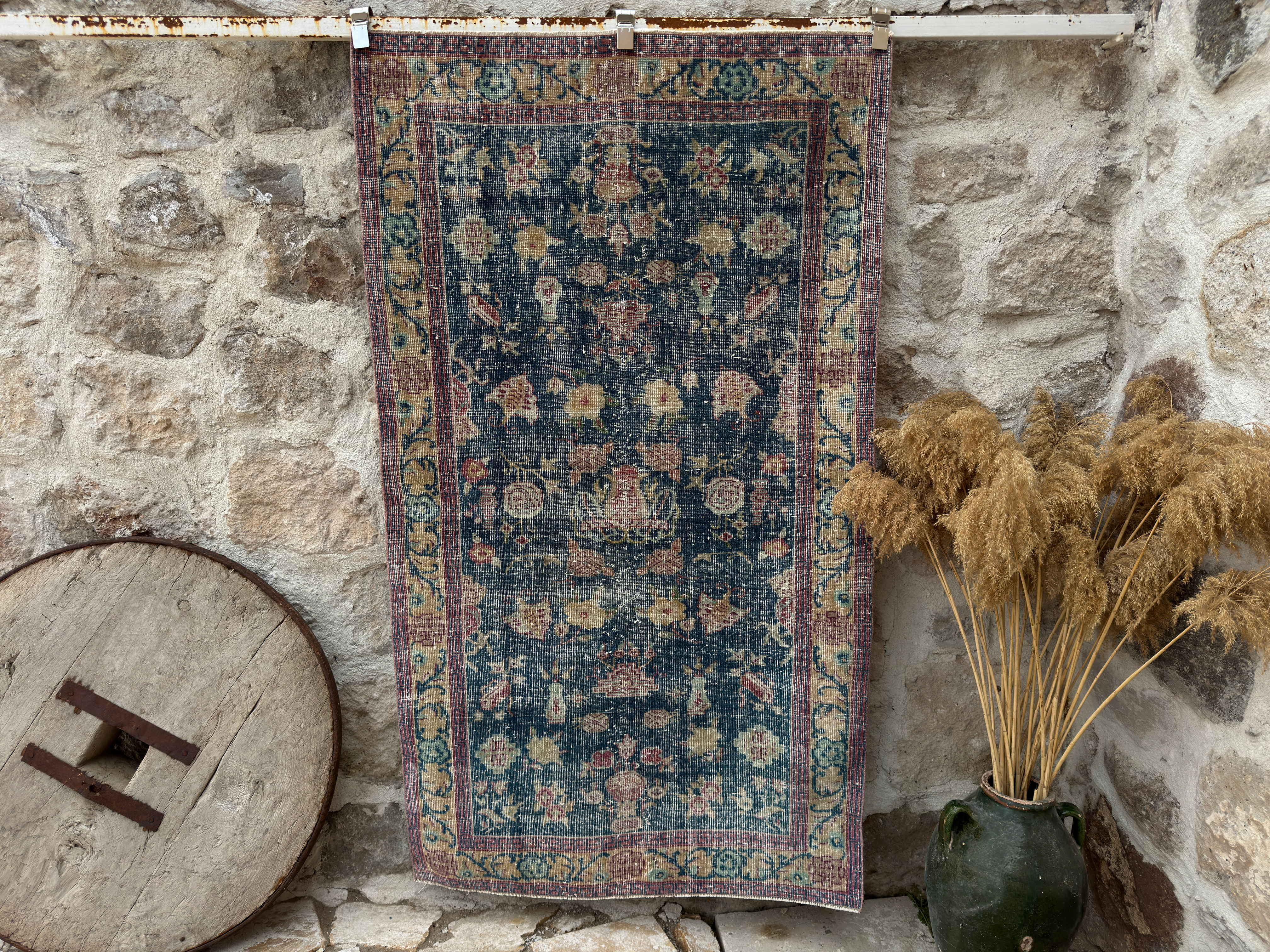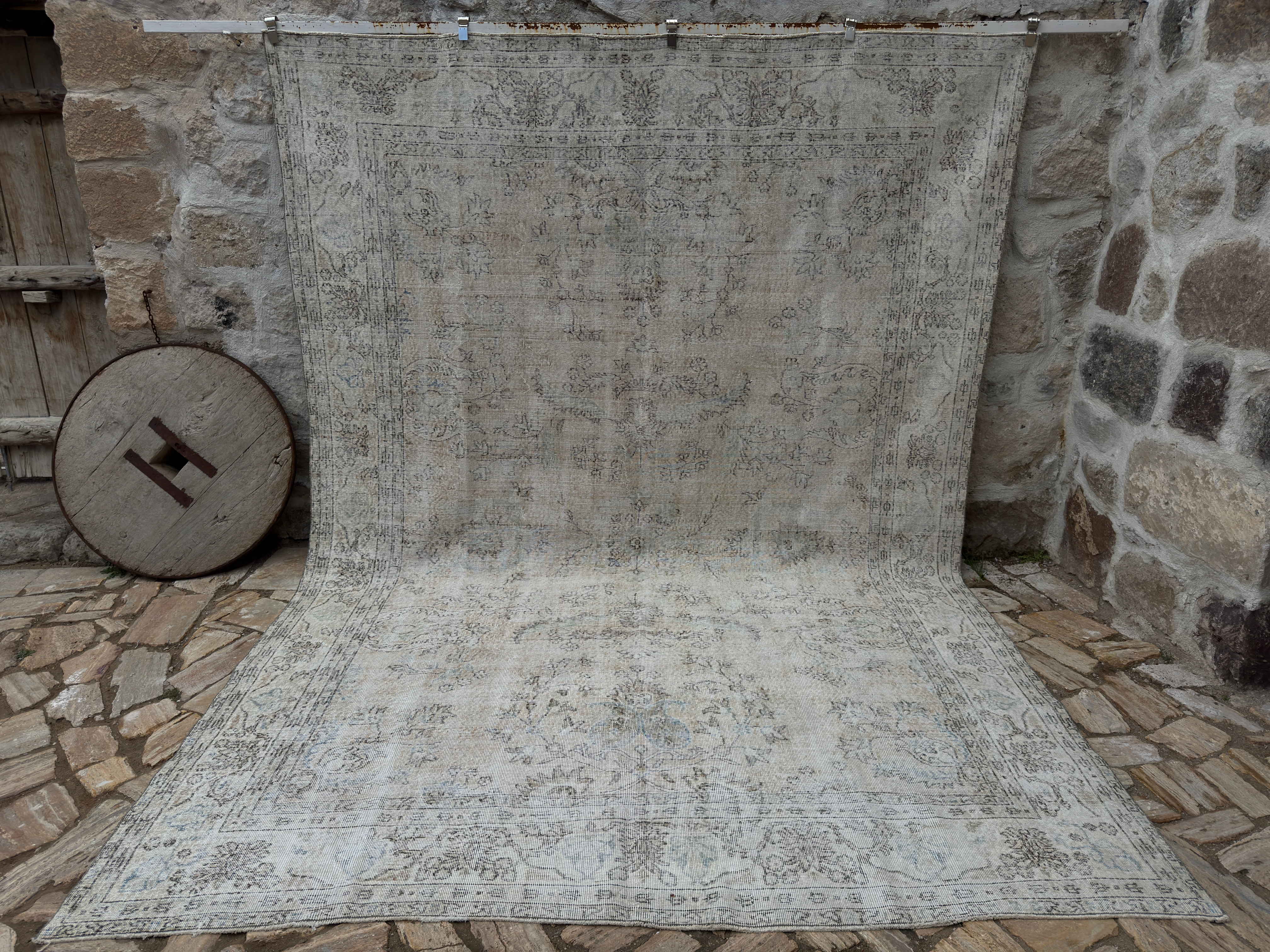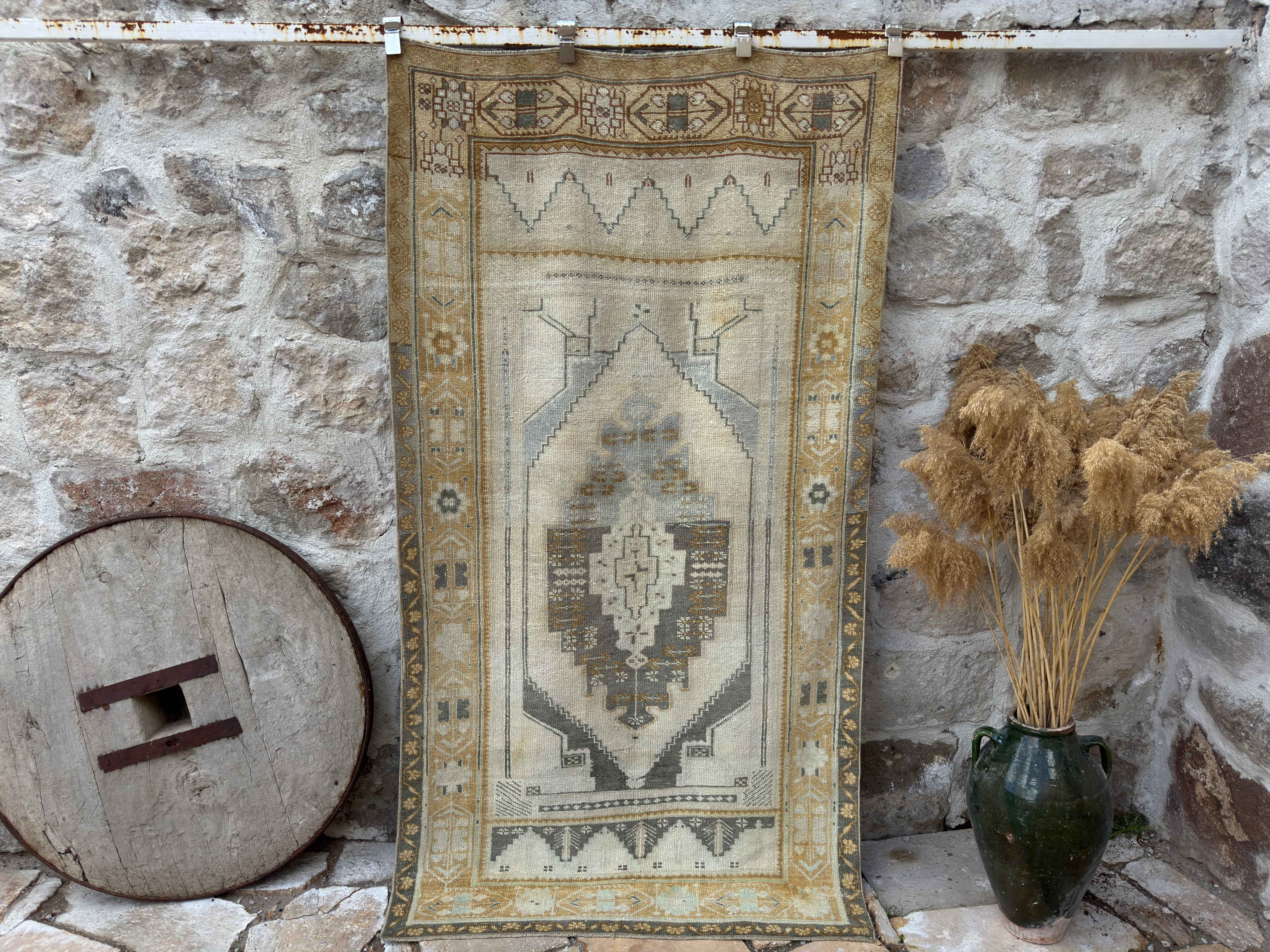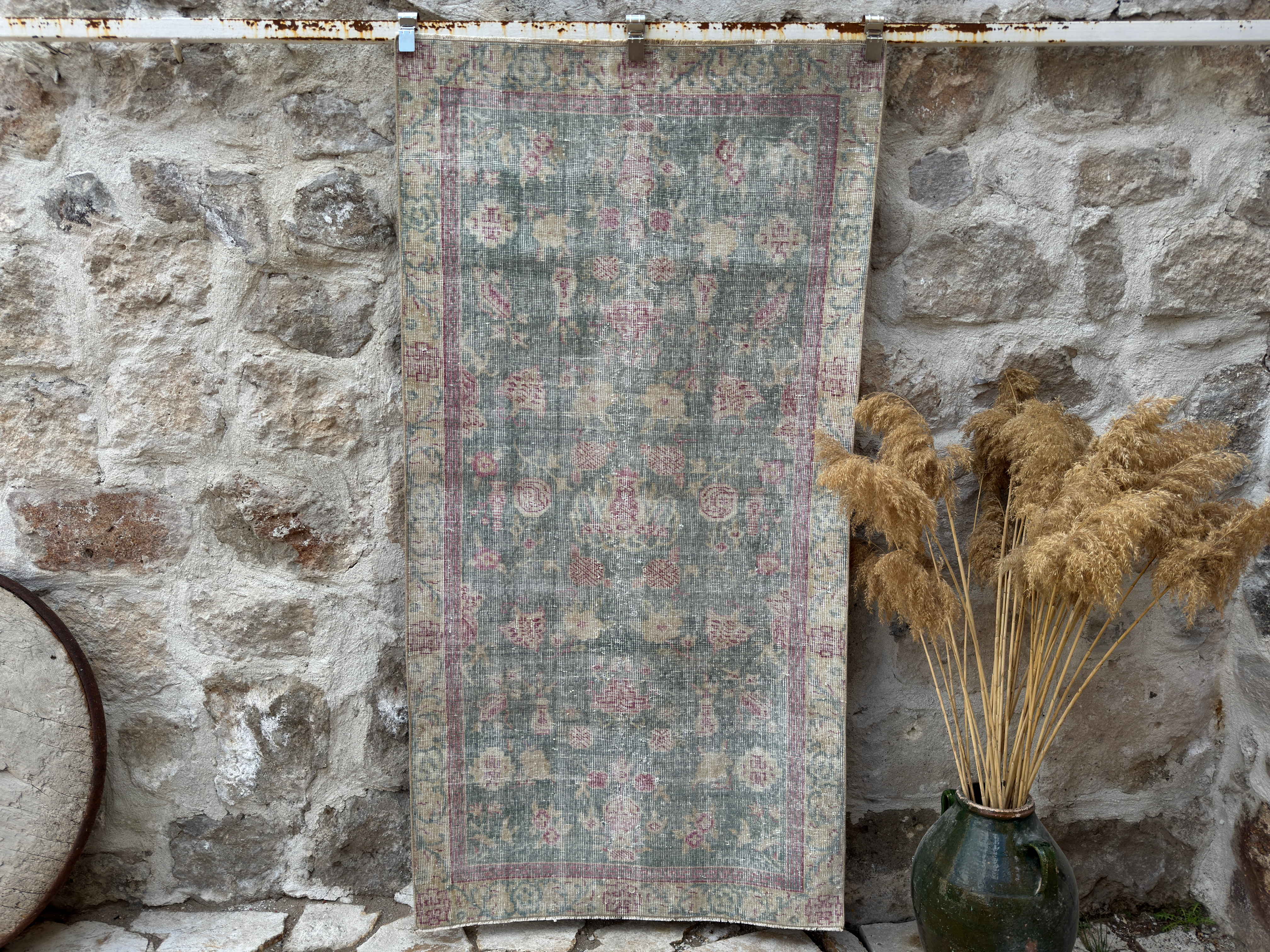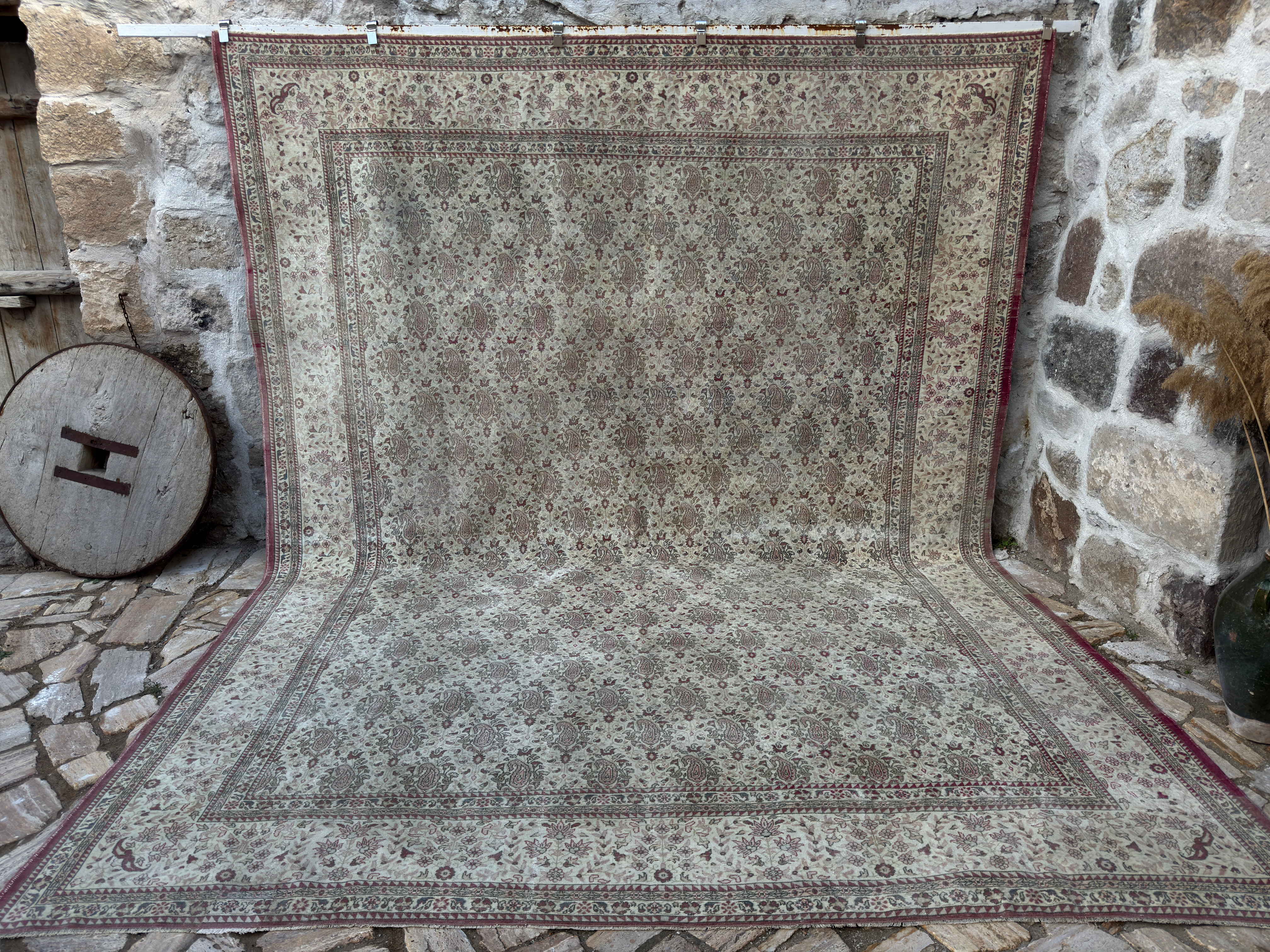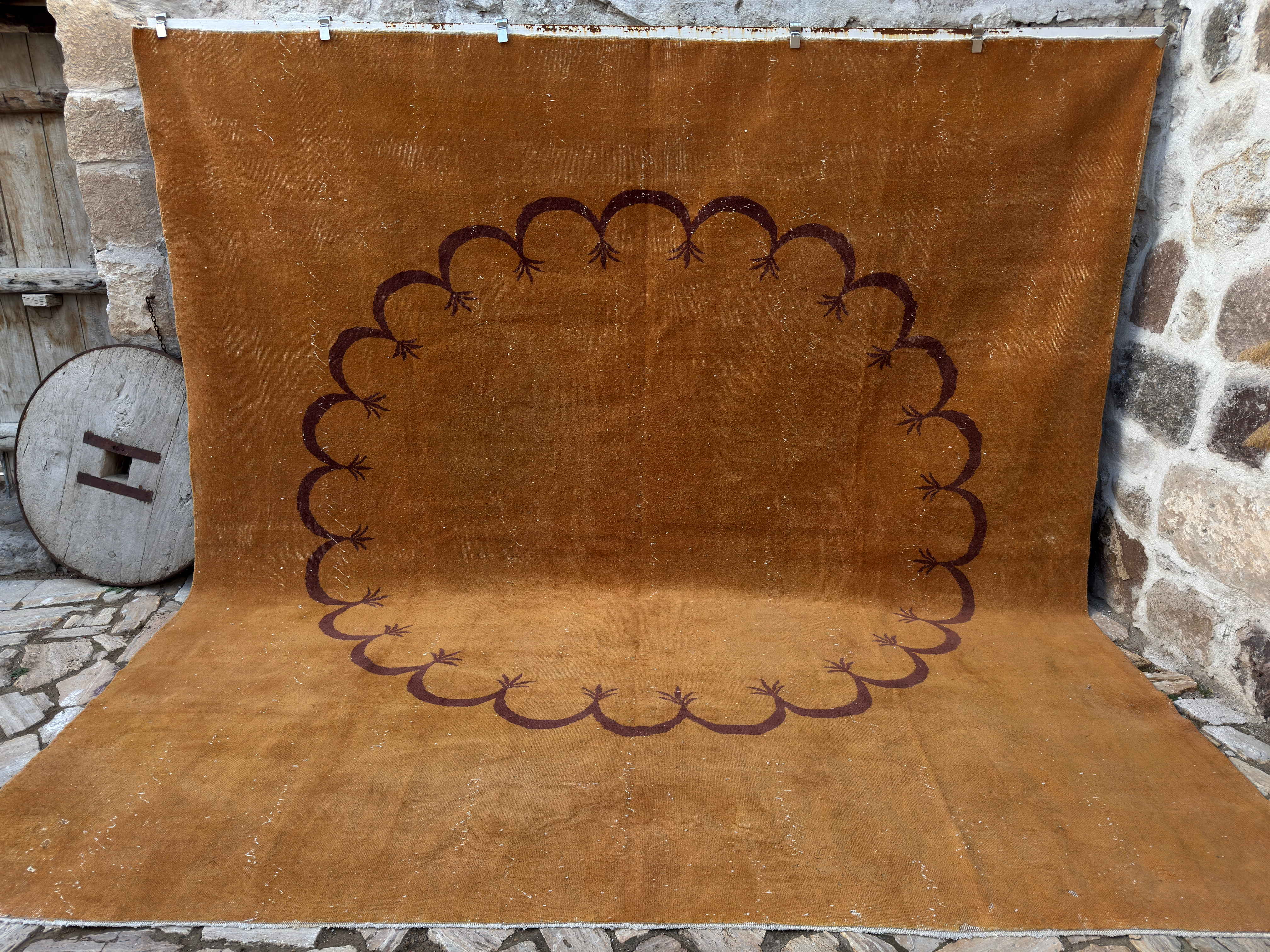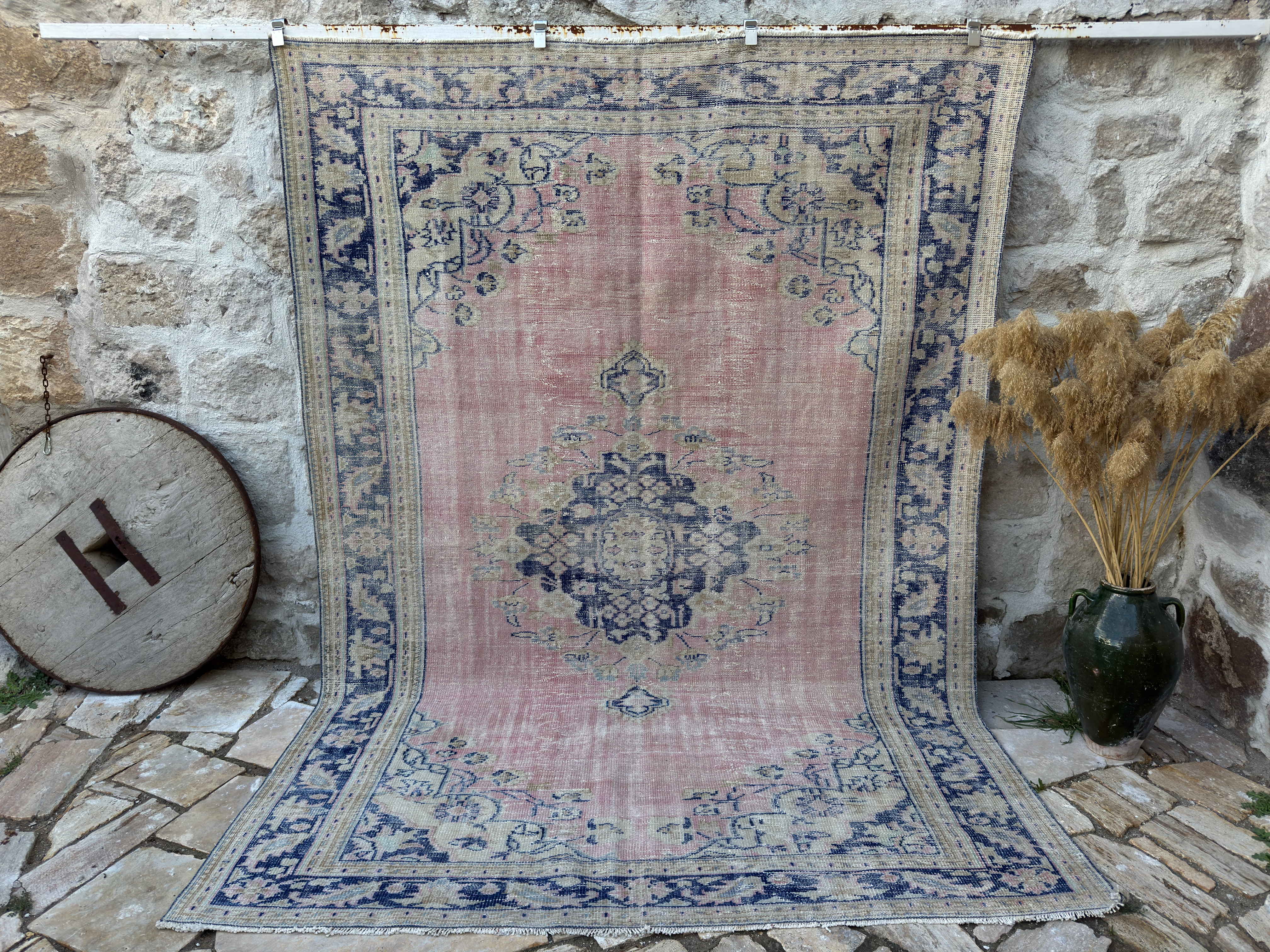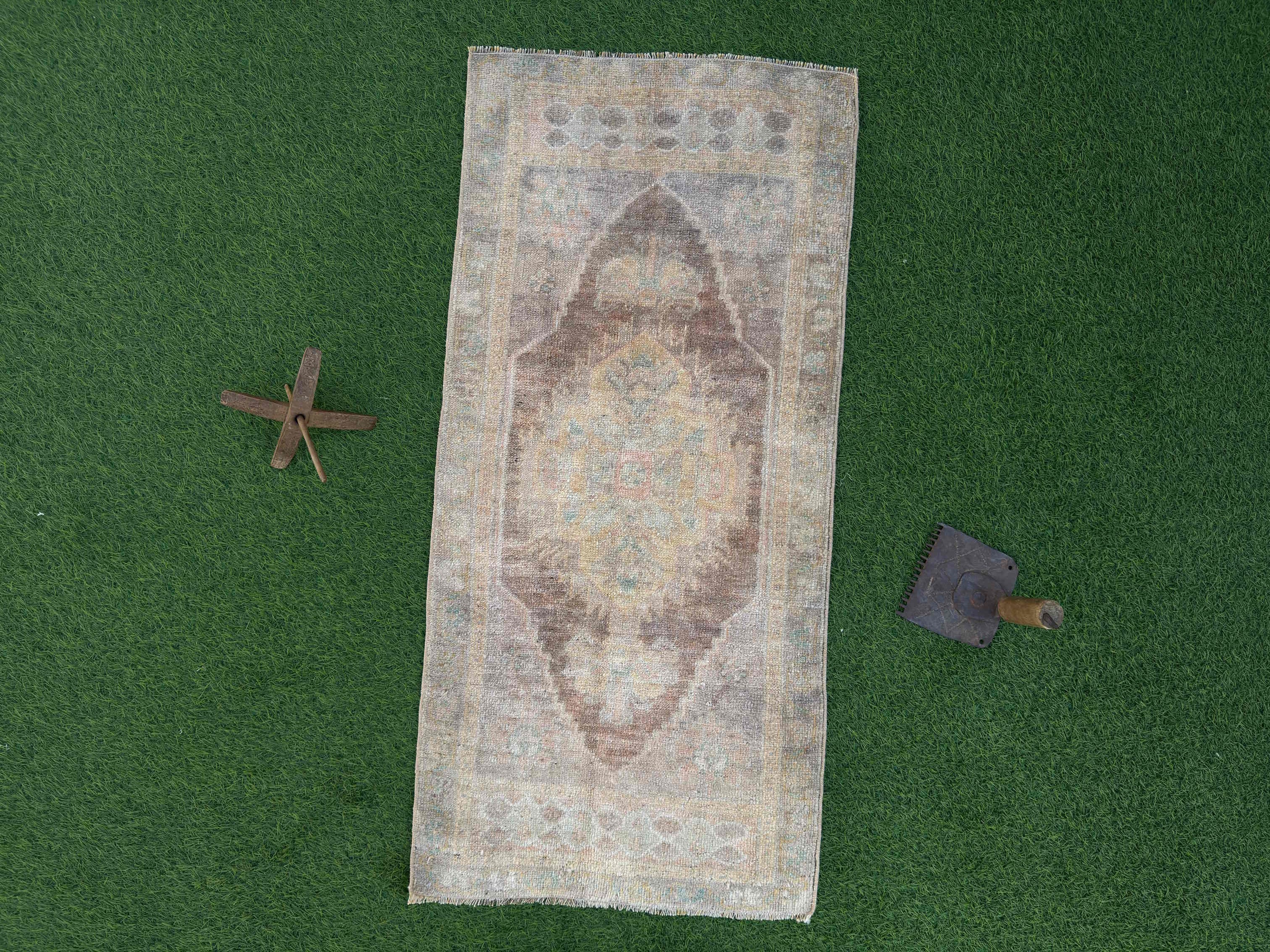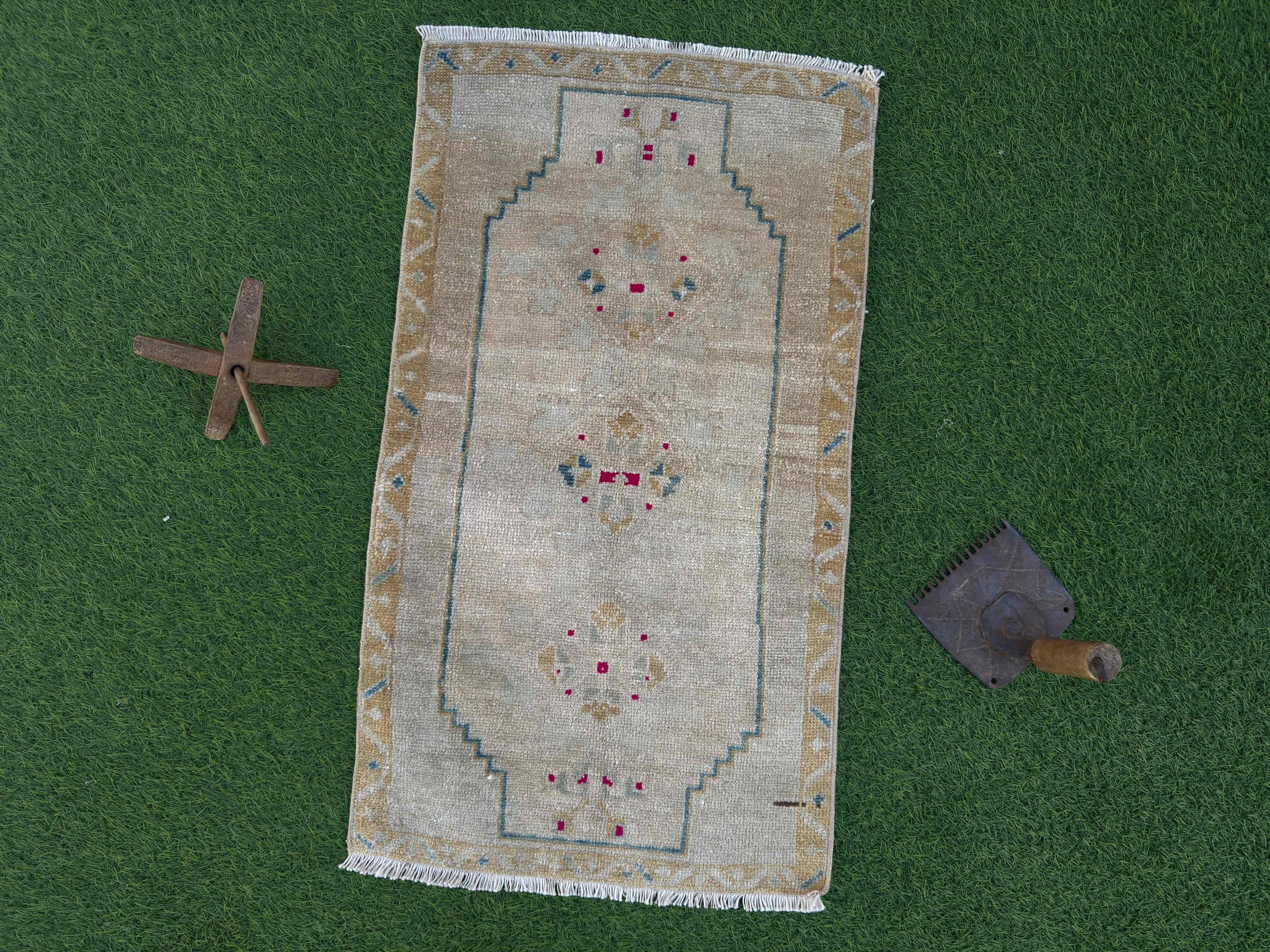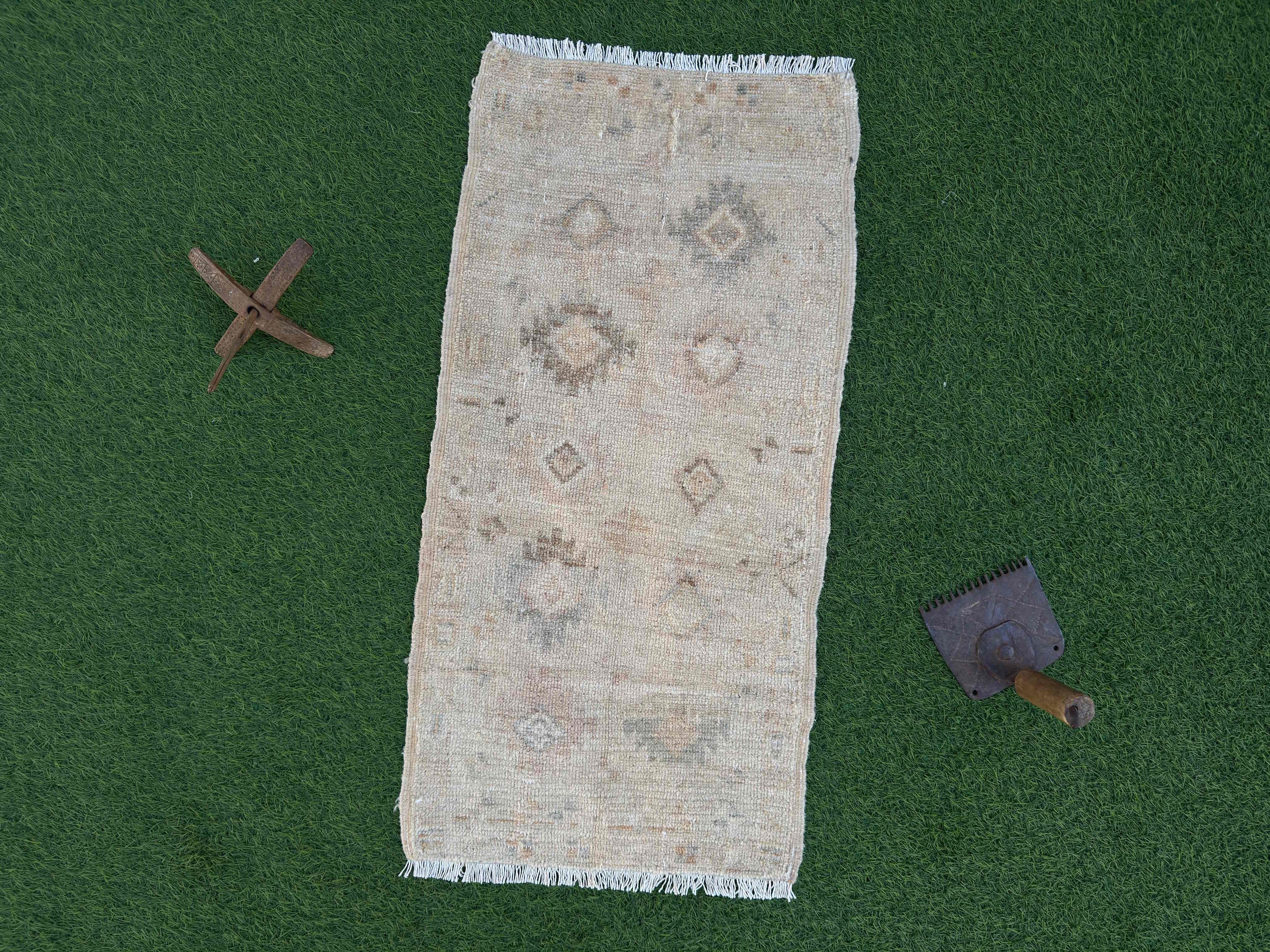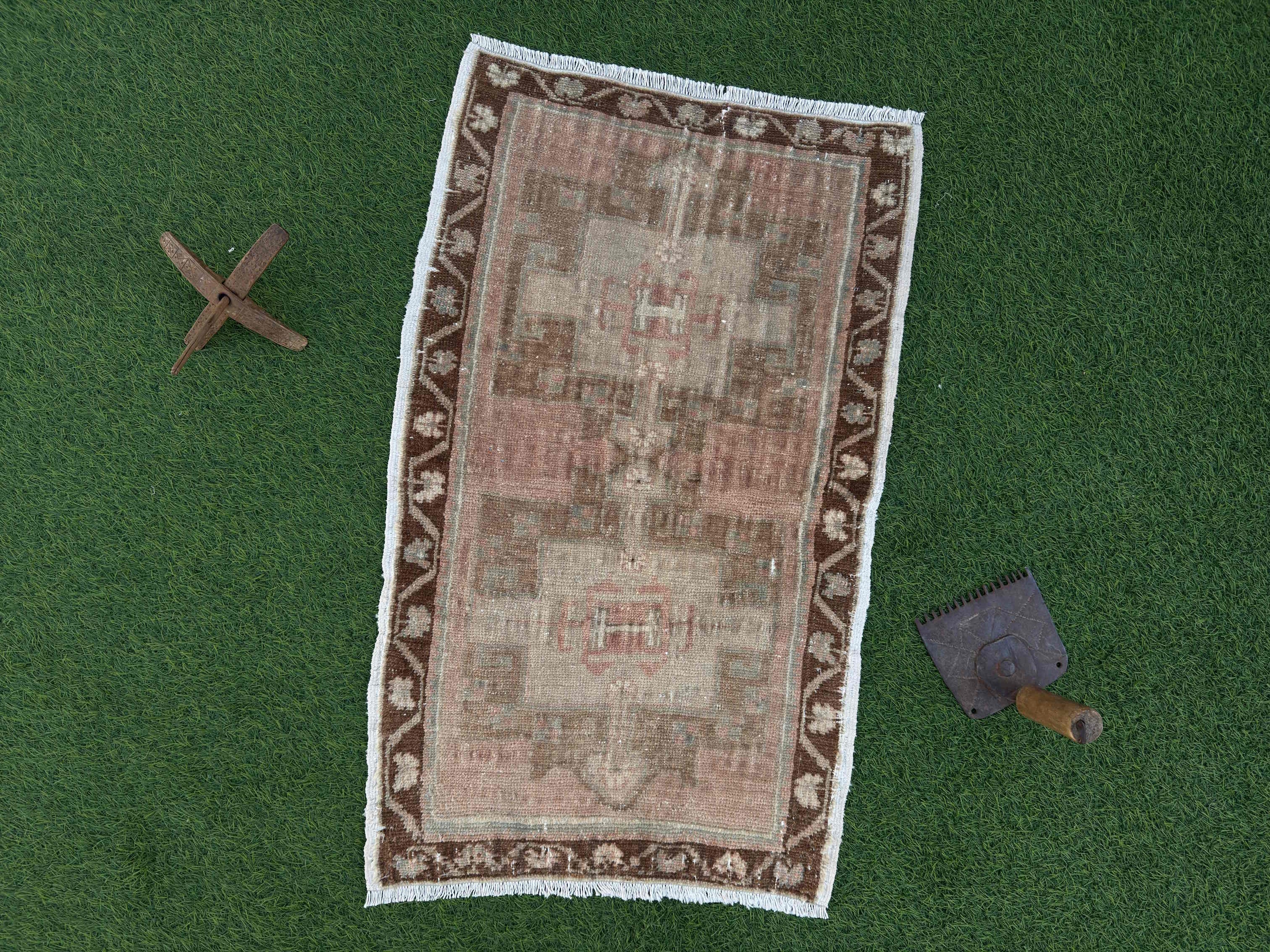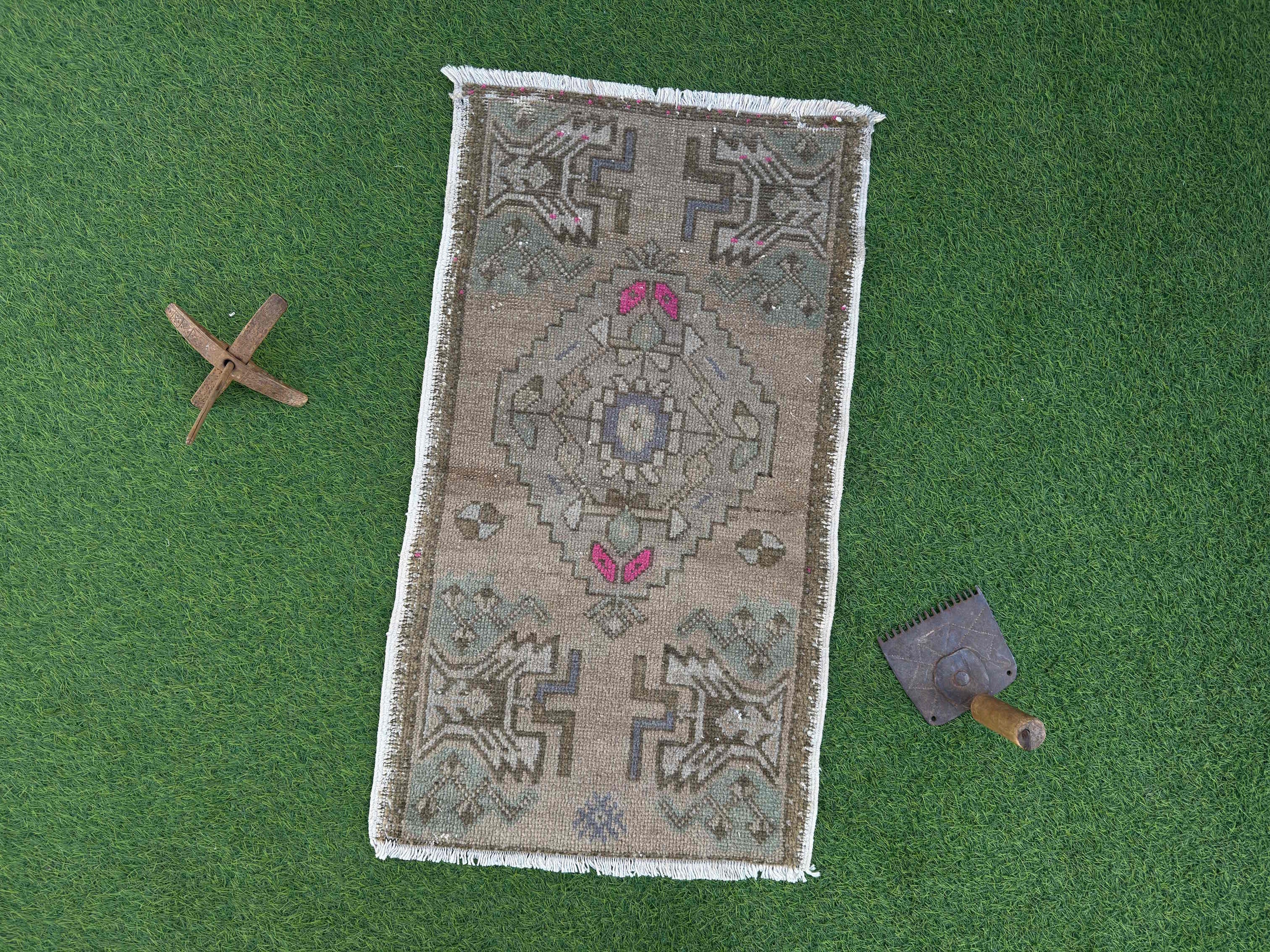Welcome to Kirmen, your portal to the world of legendary Turkish workmanship. Over the next few thousand words, you will delve deeply into turkish rugs for sale, learn the secrets of handmade turkish rugs, and find how these woven masterpieces may turn any room into a tapestry of history and design. Whether your heart is set on the luxurious shine of a silk turkish rug or the laid-back adaptability of our resilient flatweaves, Kirmen encourages you to pick confidently, guided by technical insights, cultural narratives, and pragmatic advice spun subtly throughout.
The Origin and Importance of Turkish Rugs
Imagine the flutter of a wildfire on a windswept Anatolian plain, where initially nomadic nomads wove wool from sheep into basic floor mats. Driven by need against cold evenings, these modest beginnings changed along the Silk Road as weavers came upon Byzantine and Persian artists. From these rich interactions developed regional styles that each reflected their environment and legacy. Great fields of earth-toned reds and creams in Uşak produced enormous medallions later seen in Ottoman palaces. Imperial sponsorship in Hereke required silk carpets with densities so great they resembled exquisite tapestries. The strong geometric abstractions created by Konya's indigenous people reflected the rocky edges of the plateau. Kirmen's carefully chosen selection still today reflects these legacies: when you unroll one of our Turkish rugs, you are not just covering a floor but also bringing centuries of cultural, artistic, and narrative life into your house.

Are Turkish Rugs Expensive?
From low-cost machine-made throws under $50 to museum-worthy antiques asking six figures, cost factors cover a wide gamut. Hand-knotted wool rugs in popular sizes like 5x8 or 8x10 feet usually range in price from $300 to $3,000 True middle-ground treasures Without the inflated mark-through of outside vendors, you will find items in this range with natural-dye patinas, handcrafted knot densities, and real Anatolian wool. Whether you're looking for bold accent rugs or majestic center carpets, Kirmen's direct contacts with Turkish workshops let us provide outstanding work at reasonable rates. Focusing on mid-to high-end markets helps us to make sure your expenditure strikes a mix of cost and long-term value.
Are Turkish Rugs Good Quality?
Touching decades of flawless expertise as you feel the flexible resilience of a hand-knotted Turkish rug Starting with a strong framework of cotton warps, carefully chosen and tensioned by hand to preserve the structure of the textile under weight and time, a quality rug begins Weft strands of wool, or in luxury situations, silk, interlace over these warps to create the pile, each knot tied and cut by expert artists whose methods have passed from generation to generation. Natural lanolin in the wool resists dirt and improves moisture resistance helps this painstaking procedure produce a surface that is both soft and durable. Natural colors from plants and insects form a dazzling patina as colors settle over years, therefore expanding the visual intricacy of the rug. Every rug at Kirmen is carefully inspected for constant knot density, edge integrity, and uniform pile height—qualities that ensure a rug able to illuminate your area for decades.
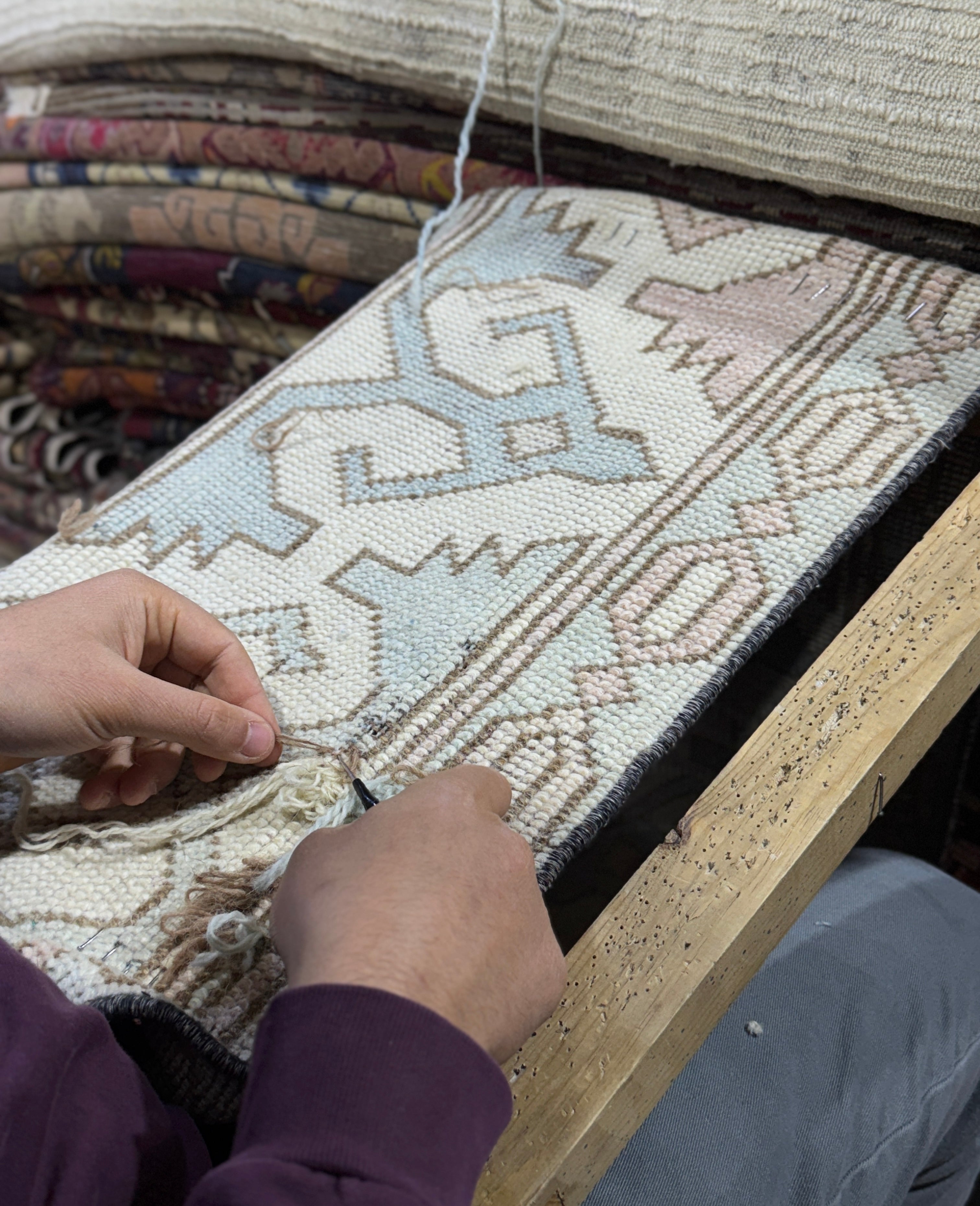
Are Turkish Rugs Valuable?
Turkish rugs blend visual appeal with real investment possibility. While antique carpets exceeding 80 years become coveted collectibles due to scarcity and historical significance, vintage rugs—weaved 20 to 80 years ago—radiate a lived-in appeal as natural colors soften evenly. From Ottoman palace collections, tribal designs from early-20th-century Anatolian looms or pure Hereke silks reflect the height of workmanship and demand premium rates. Value factors include knot density, substance (pure silk against wool), and provenance: rugs matched with certification of origin and age routinely outperform unrecorded counterparts at auction. Choosing Kirmen not only results in a beautiful ornamental item but also a certified asset backed by lifelong care support, therefore presenting your purchase as a sensible mix of beauty and long-term value.
How Much Are Turkish Rugs?
Pricing reflects the interactions of size, material choice, knot density, and color complexity. Starting at about $300, little accent mats (2×3 feet) provide a portal into real weaving. With piecework knot densities of 120–200 KPSI, standard living-area sizes (5x8 to 6x9 feet) made from natural-dyed wool typically cost between $800 and $2,000. When using premium wool or wool-silk blends, larger statement sizes—between 8x10 and 9x12 feet—can go up to $3,000. Usually combining ancient lineage with densities exceeding 250 KPSI or pure silk foundations, rugs exceeding this level usually combine Starting near $200 for vivid, reversible motifs, even entry-level, flatwoven kilims provide extraordinary value. By grouping rugs across different price ranges, Kirmen streamlines your search and guarantees you will find a piece that fits your design vision and financial constraints.

How Much Should a Turkish Rug Cost?
Knowing market benchmarks helps you avoid spending too much or settle for less than perfect. With natural colors, a real hand-knotted six-by- nine-foot wool rug will fetch at least $800; most respectable weavings fall between $1,200 and $2,200. Prices below $300 usually indicate machine-made or synthetic construction unworthy of the Turkish rug history; tags above $3,000 indicate either outstanding silk workmanship, antique provenance, or very fine knot density. At Kirmen, our open breakdowns—listing materials, knot counts, and production hours—help you see exactly how costs match workmanship, so guiding wise, confident selections.

What to Look for When Buying a Turkish Rug?
Investing in a Turkish rug requires close inspection of seven important factors:
1 – The Quality of the Rug
A top-tier rug provides tactile cohesiveness; the pile, whether dense wool or velvety silk, must feel opulent but robust. Look at the edges; instead of machine-stitched tape, well-executed binding uses weft threads spun back into the rug. Lift corners to examine the foundation; for lifespan, uniform warp tension and even knot spacing are non-negotiable.
2 – Quality of the Wool
Source from nearby sheep breeds such as the Konya and Sivas, true Anatolian wool keeps natural oils that improve stain resistance and gloss. Before dying, Superior Wool is hand-sorted for fiber length, hand-spun to preserve texture, and rinsed to eliminate contaminants. High-quality wool provides delicate springiness as you glide your fingers over the pile—not like gritty, chemically treated substitutes.
3 – The Quality of the Color
Natural colors give rug pallets life and depth. Indigo provides blues that fade to calm gray-blues, evocative of storm clouds shaken to produce rain; madder delivers warm reds that deepen over decades. Synthetic dyes, on the other hand, may fade while cleaning or under bright sunshine. To confirm, lightly wipe a moist white cloth over a faint edge—minimal color transfer reveals honest dye job.

4 – Pattern Aesthetics and Skill in Applying It to the Rug
From up close, you will see the perfection of individual knots; from three to five feet away, the general design should cohere into identifiable motifs—medallions, boteh (paisleys), or prayer rug mihrabs. Though they are marks of human hands, irregularities are not defects; rather, constant pattern flow confirms deliberate, expert weaving instead of hurried manufacture.
5 – Knot Density and Knot Feature
Not conceivable at lesser densities, high-density carpets (200–400+ KPSI) reveal amazing detail—fine florals, shaded horizons, border filigrees. Perfect for modern homes that value simplicity, lower-density rugs (80–120 KPSI) shine in bolder, larger-scale designs. Kirmen's listings let you assess quality remotely by including close-up back-of-rug photographs and specifying KPSI.
6 – Firm Guarantee and Certification
Every Kirmen rug comes with an authenticity certificate covering nation and place of origin, main materials, knot density, and whether natural dyes were applied. Supported by a 30-day return policy and lifelong cleaning discounts, our assurances give you piece of mind and protect your investment against misrepresentation or transit damage.
7 – What Size Rug Should Be Chosen for Which Environment
Choosing the correct size transforms a decent rug into a design focal point. Full-coverage under furniture legs in 8×10, 9×12, or even 10×14 foot patterns reinforces seating configurations and creates conversational areas in living spaces. Dining spaces need at least two feet of rug clearance beyond table edges—eight times ten is the minimum for six-seater configurations; nine times twelve fits more groups. Placed under the lower two-thirds of the bed, 5×8 and 6×9 carpets extend sufficiently to cradle nightstands in bedrooms. Explore our Runner Rugs for exact measurements; 2.5x10 runners guide footprints and give visual flair for little hallways.

What is a Turkish Rug?
A Turkish rug is, fundamentally, a hand-knotted textile produced in Anatolian looms. These carpets, distinguished by their symmetrical Ghiordes knot, mix wool or silk wefts with cotton warps to create flexible but strong surfaces. From complex Ottoman-era florals to tribal geometrics and protective talismans, motifs represent both local lore and cross-cultural influences. From dense fluffy carpets to flatwoven kilims, each variant offers different tactile and visual sensations based on height of pile knots. Investing in a Turkish rug from Kirmen gives you a piece of live cultural legacy that, with time, adds character and value.
How to Identify a Turkish Rug?
Identification of genuineness calls for structure, style, and sensory assessments. Start by flipping the rug; hand-knotted pieces show clear, symmetrical knots reflecting the design. Not sewed-on embellishments, but warp thread extensions make up the fringe. Run your palm over both surface and back; unlike synthetic-backed reproductions, real wool or silk feels warm, flexible, and breathable. At last, pay attention to little flaws—slight color changes or uneven edges—that honor human work more than mechanical accuracy.

How Do I Know My Turkish Rug Is Handmade?
Set apart by sight and touch. Handmade rugs contain little knot-sized variances; their backs resemble pixelated front pattern. To hold synthetic fibers, machine-made rugs can have a rubber or latex backing. Check the fringe: was it stitched on or does the warp of the rug include it? Front, back, and edge details in Kirmen's high-resolution product galleries help you to verify handcrafted authenticity from any part of the globe.
How to Tell the Age of a Turkish Rug?
The narrative of a rug reveals itself in its wear and color change. While artificially aged copies often show severe deterioration, antique antiques reveal soft fade lines where natural colors have matured consistently. Look for fringe thickness; true aging softens cotton warps and edge bindings for patina. Combining eye inspection with lab-based dye analysis, Kirmen's vintage certification process verifies age within decades rather than centuries.

Where Can I Find an Original Vintage Turkish Rug?
Istanbul's Grand Bazaar is still famed, but internet buying calls for careful consideration. Counterfeit goods contaminate markets, and exporting delicate, centuries-old rugs carries risk. Every rug from Kirmen Rugs arrives with provenance records, condition reports, and high-quality images. Supported by free worldwide shipping and restoration referrals, our collection spans eras and countries whether your search is for tribal Yörük runners or 19th-century Hereke masterpieces.
Where Do You Find a Turkish Rug Online?
Authenticity is your compass among sea of mass-market vendors. Without in-person screening, major auction sites present risk. Kirmen Rugs offers a well chosen portal: search by area, size, knot density, and material—turkish rugs cheap kilims, mid-range wool pieces, premium silk mixes, and more. Every listing simplifies your online buying experience with open pricing, free certification, and thorough care instructions.
How Often Should I Have a Turkish Rug Cleaned?
Maintaining the beauty and lifetime of a Turkish rug depends on both routine maintenance and occasional expert treatment. Using a brushless attachment, gently sweep the rug weekly to remove surface dust without hurting fibers. Blot spills right away with a white, clean cloth—never rub—to stop dyes from bleeding and fibers from matting. Engage a reputable rug-cleaning professional using pH-neutral, wool-safe solutions every three to five years to remove deep-seated debris while maintaining the natural oils in the wool. At Kirmen, we work with top international cleaners to provide door-to--door service so that the colors of your rug stay vibrant and its structure sounds for many generations.
How Should You Store a Turkish Rug?
Rotating rugs seasonally or protecting heirloom items calls for proper storage. First make sure the rug is completely dry and clean; any leftover moisture or trash could encourage mold or draw pests. Roll the rug pile inward—folding permanent creases—and wrap it in breathable, acid-free cotton or muslin to let air flow while protecting against dust. Store in a climate-regulated area; avoid hot attics or damp basements with sharp temperature changes. Arrange natural repellents, such lavender sachets or cedar blocks, next to the wrapped rug for further protection. Kirmen's safe vault storage offers skilled climate control, routine inspections, and peace of mind that your investment remains unspoiled for especially precious or ancient fabrics.





